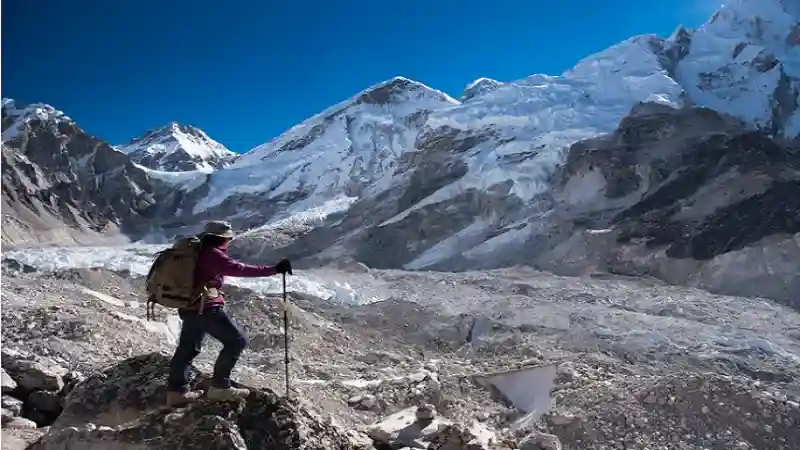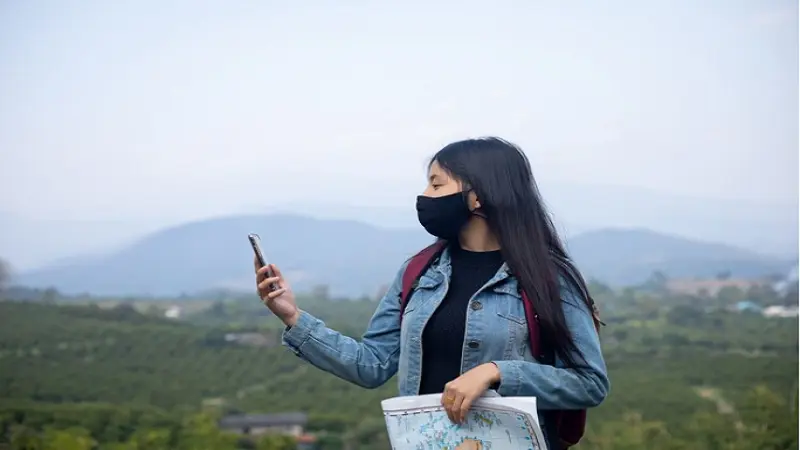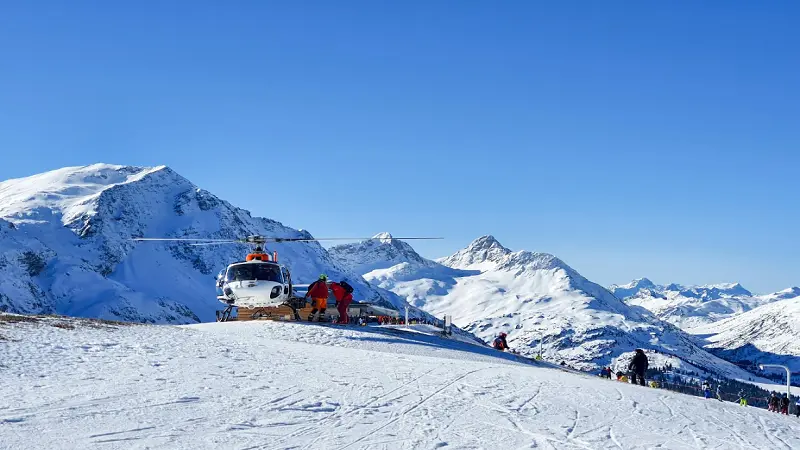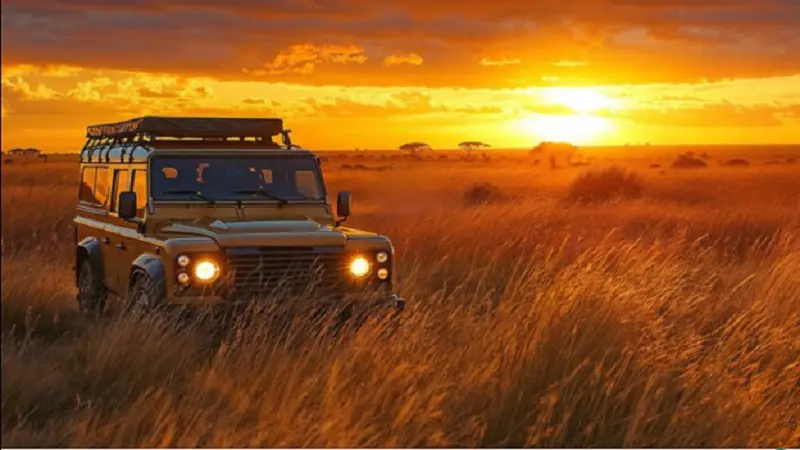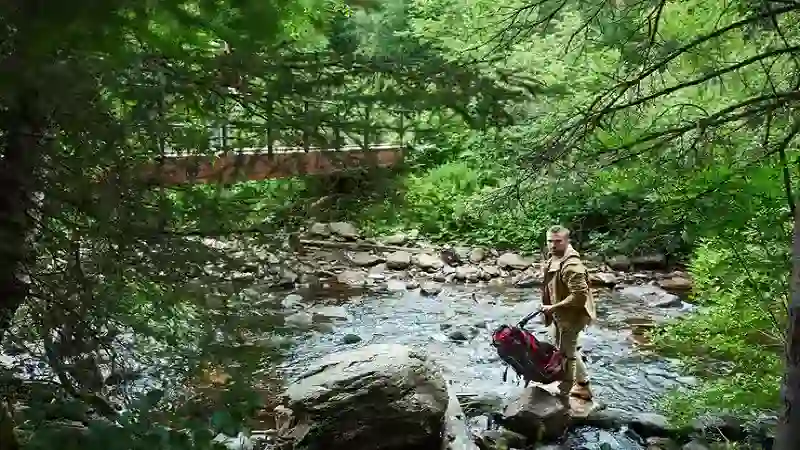The Everest Base Camp Trek is one of the most famous adventures in the world, luring trekkers even beginners and experts. Deep in the heart of the incredible Himalayas, this is a trip that not only presents you with stunning vistas of the highest peak on earth but also takes you through an unforgettable cultural journey immersed in rich Sherpa tradition. Natural beauty, epic physical challenge, and spiritual connection make this a dream trek for any adventurer.
The trek starts in the bustling town of Lukla and covers around two weeks before taking you through some of the most beautiful scenery imaginable, crossing over from luscious forests to open mountain waves. The trails are well-trodden and even newbies to the higher altitude stuff can do this walk, with good signage throughout. Hikers are rewarded with a variety of environments ranging from rhododendron forests to alpine meadows as they continue the upward journey, interspersing many ecosystems filled with life on every corner. Such climbs are carried out through gradual rheological elevation and at the same time, help in acclimatization thereby reducing the high altitude risks.
It is the sojourn of Everest Base Camp Trek that makes it different from other easy treks not just physically, but also culturally, which other than any trek to Nepal cannot provide. The trekkers get a chance to beat with Sherpa communities and know the warmness and hospitality on their own. Along the way, cozy villages like Namche Bazaar and Tengboche offer a glimpse into the Sherpa culture and lifestyle with their traditions, customs, and strong Buddhist faith. A visit to ancient monasteries, involvement in local festive activities, and relishing native meals are all part of the enrichment that the trek has to offer.
The walk ends as you enter Everest Base Camp, which is a sacred place for climbers and nature lovers. Ascending toward the massive Khumbu Icefall, trekkers standing before it are often at a loss for words. It is the moment not only of our physical success in arriving at Base Camp but also of us bonding to the exploring spirit that winds have drawn so many climbers and trekkers through these mountains for decades. It is to etch into your memory for life the breathtaking heights of Everest, Lhotse, and Nuptse that form an impressive background.
Safety and health are the most important factors for focus on this trail, where trekkers begin their journey with a proper guide before trekking on a challenging path. Being well-acclimatized, physically ready, and knowing what is going on with the territory makes this journey possible for anyone.
At the end of the day, The Everest Base Camp Trek is not only a trek; it is an experience in self-introspection, companionship, and nature. It beckons adventurers to venture beyond their limits, into uncertainty — the land of eternal memories. Whether it’s personal growth, love for adventure, or simply the awe-inspiring beauty of the Himalayas that you seek, this trek has something for everyone and each adventurer who attempts this trek will hold onto their experience forever.
Basic aspects of Everest Base Camp Trek
Everest Base Camp Trek has been one of the top choices for most adventurers in the world. Located in Nepal’s glorious Khumbu region, this trek is a once-in-a-lifetime chance to view the natural beauty of the towering Himalayas including The great Mount Everest. The trek — which lasts 12 to 14 days on average — starts with a flight into the charismatic town of Lukla, which has an airport taller than most high-rises nestled in the mountains. The journey then follows trekkers through green forests, tiny and idyllic Sherpa towns, and awe-inspiring scenery up to Everest Base Camp at 5,364 meters (17,598 feet).
The trek is not just a feat of physical endurance but an eye-opening cultural experience as well. In addition, trekkers will get to learn about the traditions of the local Sherpa people, visit ancient monasteries, and be warmed by the hospitality of the region. At every twist and turn, trekkers find their path above multiple altitudes and changing topography that promises a commanding view of some awesome icons like Lhotse Nuptse and Makalu. The Everest Base Camp Trek is a life-changing journey that allows you to break down barriers and experience the true adventure in you with its breathtaking views of nature and vibrant heritage of the Himalayas.
History of the Trek
The trek to Everest Base Camp has been famously known as The Top of the World Expedition as the records set in exploring Mt. The Sherpa people have traversed this trail for centuries as a native trade and cultural exchange route long before it became popular to the outside world. Even so, trekking came on the international radar only in 1953 when Sir Edmund Hillary and Tenzing Norgay were the first to ascend Mount Everest. Their success was seen around the world, and it gave many trekkers and climbers to explore more of the area.
In the years that followed this epoch-making climb, the route on which it succeeds to Everest Base Camp grew in fame as an iconic walk for voyagers striving after adventure. This marked the beginning of expanded infrastructure with better-marked trails and tea houses, and more trekkers venturing into the Khumbu region. The resultant rise of trekking and mountaineering also informed local Sherpa communities, who progressively became a major part of the tourism industry, working as guides and porters.
It has developed into a well-oiled adventure attracting thousands of trekkers every year. While a lot has changed, the trek retained its heritage of exploration and the spirit of adventure. Everest Base Camp Trek — A testament to human endurance and one of the world’s most iconic mountains!
Best Time to Visit
Picking the right season to start your Everest Base Camp Trek is important as weather conditions can make or break a trek like this. AccommodationsNot exactly around the scenic beauty, however way away from a major city chaos would be the accommodation options at these hill stations. The times to go listed here are throughout the pre-monsoon (spring)& an auto wreck and publish monsoon (fall) seasons. Although treks here are now possible year-round, the spring months of March to May are the most popular as temperatures are warm and skies mostly clear for views of surrounding peaks. It is at this time that rhododendron flowers bloom on the hillocks to add a dash of color.
Another perfect time for trekking is from late September to November, the autumn season. The weather is always consistent, and it offers clear views that are perfect for photography and sightseeing. This is also the time when a person can go trekking since days are nice and sunny, although the nights can get quite cold, especially in higher altitudes.
The summer monsoon season (June to August) brings monsoon rains; trekking during these months can be dangerous due to flooding and the risk of landslides, and cold temperatures may make high passes treacherous. But during winter trek a quieter trail (fewer people) and magical snow-covered scenery are waiting. At the end of the day, the decision to trek ‘when’ depends on individual preference and their ability to withstand different weather otherwise spring and autumn are still classified as optimal seasons for your Everest Base Camp adventure!
Preparing for the Trek
Hence you must be prepared before embarking on the Everest Base Camp trek Cost. Since the trek is on high lands and rugged terrain, it requires physical strength. If you are planning to trek, then you should undertake a regime with an emphasis on cardiovascular endurance, strength training, and hiking practice walking in diverse terrain(s). You should train at least 2–3 months out starting to build up your stamina by doing long hikes with elevation to mimic the trek,
With physical preparedness, mental readiness is equally important. It can be grueling, wandering alone for hours on end on the shoulders of dusty roads, and walking over baking hot sand — overworked both mentally and physically. Getting to know the route, what the trails are like, and what you might be up againstGetting ill has cut our training back quite a lot so experiencing it as it is going to happen — pole use is no longer an option; with pulmonary insufficiency one can function properly only in 6000m altitudes.
The third area is packing the proper gear. You want to have quality equipment and trekkers should at the very least own sturdy hiking boots, plenty of layers-type clothing, warm sleeping bags, and trekking poles. Essential — First-aid kit, water purification tablets, personal medications
Similarly, acclimatization is necessary even when you are trekking at height. If you are a veteran trekker, you will have built rest days around your schedule and every move you make should match with how your body is feeling. Similarly, engaging with the local guides and fellow trekkers can make experiencing valuable support from all ends of direction that will uplift your enthusiasm during the journey too. By preparing thoroughly, trekkers can fully enjoy the Everest Base Camp trek with powerful memories in one of Earth’s most majestic locales.
Permits and Regulations
Knowing the permits and regulations required to do the Everest Base Camp trek prep before starting this trek is essential to avoid unnecessary surprises. Hikers/Sagarmatha National Park Entry Permit/ Trekkers’ Information Management System (TIMS) Card source mapping of the hiker / Sagarmatha national park entry allow/ TIMS card:- The other permit is a Sagarmatha National Park permit, which grants you entry to the national park where Everest Base Camp resides and can be obtained at the park entrance in Monjo or Kathmandu. The Tims card is important as it allows authorities to keep track of trekkers and make sure they are safe during the trekking region.
These permits can be easily obtained but the trekkers will have to provide their relevant documents such as a copy of their passport and passport-size photo. We recommend that you get these permits in advance, either through a local trekking agency or by yourself in Kathmandu.
Besides the permits, trekkers are subject to certain rules which are intended to help protect the natural environment and local culture. This can best be experienced by nature lovers who take utmost care in practicing responsible trekking and ensuring they are not adding to the waste surrounding the lush greens, they also believe when you want to experience a place then feel it thoroughly — be there where you are — respect the culture & tradition— meet localities- help or buy from them. With more people wanting to visit, these protections must be kept in mind so that the trail remains protected and the communities who live in — and off of — this incredible land can continue their way of life for generations to come. Trekking in this area is exciting and rewarding while contributing to maintaining the Everest region by understanding these permits and the laws associated.
Choosing the Right Route
Selecting the best route for your EBC Trek Map plays a major role in determining an enjoyable and rewarding experience. Although the classic trek from Lukla to Base Camp remains the most well-trodden route, there are alternative ways to reach it suited for different fitness levels, available time, and interests. The classic trek normally encompasses 12-14 days and serves as a mixture of exclusive panoramas and local sherpa hamlets. Yet, for the more unorganized pack_mumped crowd there are option courses that consolidate less trafficked ways like Gokyo Lakes Trek or Three Passes Trek that offer stunning viewpoints and fewer people.
Shorter itineraries for visitors on restricted time can also be put together, though they will most likely include more intense day hikes. You should evaluate your physical capacity, altitude adaptability requirement, and trekking experience while selecting a trail. Moreover, it is worthwhile to consult local trekking agencies for an itinerary adapted to your preferences.
In the end, the best is of course relative when doing the the Everest base camp trek – and it highly depends on what you want to get out of your trek. Both route variations; classic and alternate will take you over high mountain passes to unforgettable views of the pristine Himalayan landscapes, the contrasting lands of vibrant green grassy hills and arid exposed rock faces in the stunning Imja Khola valley, a labyrinth of standing prayer walls, flags and stone dry-stacked small huts adorn this remarkable region.
Accommodation Options
Lodging choices along the Everest Base Camp Trek have changed dramatically to satisfy a wide variety of trekker necessities. On the route, there are usually a variety of options including basic teahouses to more comfortable lodges. In the lower areas, particularly in Lukla and Namche Bazaar; trekkers can find well-equipped lodges with hot shower Wi-Fi, cozy dining, etc. Many of these establishments offer robust, trek-friendly meals to keep hikers fueled on their adventure.
Accommodation, as the trek climbs higher, is generally simpler, with basic rooms with shared facilities available in teahouses. The amenities are of course a little sparse, but the warmth of the local hospitality makes up for it. Teahouses serve traditional Nepali food while trekkers get to taste the local cuisine and share tales with other explorers and Sherpa settlers.
Also during peak trekking seasons, it is a good idea to pre-book your accommodation, as teahouses can get crowded. Moreover, this is a flexible itinerary since trekkers may want to stay more days in some villages for acclimatization or just for good views. Altogether, the wide array of accommodations types along the trail augments your trekking experience facilitating you to delve deep into the magnificent landscapes and vibrant culture in the Everest region ensuring a good night’s sleep.
Packing List for Your Cycle Tour
Having the right gear and packing list for the Everest Base Camp Trek is a key component to ensure a memorable, successful trek. Investing in the right gear can greatly improve your experience, making sure you are equipped for harsh weather and high-altitude hiking. The most important gear to invest in is a good, broken-in pair of trekking boots. Layering is important; bring different moisture-wicking base layers, insulating mid-layers, and a protective waterproof shell to withstand all weather conditions.
Additional essential items are a good cold-jungle sleeping bag, as well as trekking poles if you need an added level of stability on uneven surfaces, and also a day-pack to store your daily provisions like water, snacks, and first-aid supplies. Remember to bring personal items — sunscreen, lip balm, water bottle (with purification tablets or a filter), etc.
A comprehensive packing list should also contain things like gloves, a warm hat, sunglasses, and additional socks. Pack wisely to lessen the load of porters who will carry your luggage and remember about the weight of it. In the end, extensive preparation and appropriate equipment are key to a successful trek to Everest Base Camp which allows you more time and energy to appreciate the beauty of the region and its rich cultural heritage.
Trekking Itinerary Overview
In general, the trek itinerary for Everest Base Camp Trek is 12 to 14 days depending upon the acclimatization and availability for exploring the landscapes and traditional culture of residents. Starts from Kathmandu–Lukla by a flight. The initial days are mostly about trekking to important halts like Phakding and Namche Bazaar– a bustling hub for the trekkers where you can acclimatize yourself and advent in local markets.
Through the experience, you get to visit Tengboche (home of the magnificent monasteries) and Dingboche which is yet another acclimatization point. These stops not only make rest available but also offer some breathtaking views: Mount Ama Dablam and Mount Lhotse are seen with other mountain peaks towering over the landscape at these resting spots.
The last leg of the route to Everest Base Camp includes hiking past the Khumbu Glacier, providing walkers with awesome visions of the tallest peaks on Earth. One day took to trek back to Base Camp with us reveling in the amazing environment before heading home the next. The way back is usually done on the same trail, retracing steps and sightseeing the landscapes which you probably missed in your tiredness.
Depending on the weather, and how you are feeling, the itinerary can change. This measured pace allows trekkers to fully absorb the stunning natural wonders and cultural wealth of the Everest region as well as safely tackle the difficulties that come with high-altitude trekking.
Health & Safety Requirements
For embarking on the Everest Base Camp Trek, only proper safety matters along with health as high altitude trek hence the challenges here are different. The most important among them is altitude sickness which can happen to the fittest amongst us But to acclimate correctly, you must make adjustments for your body to get used to the increasingly elevated altitudes and reduce possible risks. To counteract this many operators will include a slow ascent into their schedules, resting at key places like Namche Bazaar and Dingboche.
Proper hydration is a big part of the equation for preventing altitude sickness and health in general. Hikers should have as much as water they can take means a minimum of 3 to 4 liters per day. Bringing a water bottle that comes with provisions to purify your drinking supply can guarantee safe drinking along the way.
Moreover, familiarizing yourself with trekking injuries like blisters or sprains and their prevention can drastically improve safety. Use trekking poles and tight hiking shoes to minimize the risk of injury. A more extensive first-aid kit is also a must-pack, which should be well-stocked to include personal medications and the basics.
Additionally, traveling with trained guides makes a big difference when it comes to safety. They can check your health, tell you how to get adjusted and guide you in the paths. When you trek safely and treat your health as the priority, it will be easier to savor the splendor of the Everest region without putting yourself in danger thus ensuring a memorable, invigorating journey.
Culture Sneak Peeks and Tradition Insights.
This route offers not just the picturesque vistas, but a culturally enriched view to understand and help learn about the Tibetan- Buddhist Sherpa community. This region is a melting pot for western Tibetan Buddhism and ancient Sherpa culture, which can be seen in the abundance of monasteries, prayer flags, and stupas scattered on the trail. Along the way, trekkers are complimented by colorful villagers whose warm genic (villagers, etc you find to be welcoming) spirits embody a brand of welcoming eternally profound hospitality.
This kind of adherence to an authentic local culture is necessary if you seek a true experience from your travels. You greet locals with a warm “Namaste” rather than just saying hi, and when you pass by a monastery or sacred site you show respect. Photography is allowed however, it’s respectful to ask permission on religious sites. There you go, even the trekkers also come to know about religious symbolism including the prayer wheel, which is regarded with high reverence in such a divine land.
By taking part in these local rituals, a traveler starts to understand the culture. Community events, tasting a traditional dal bhat-style dish, and attending local festivals can provide you with special insights into the ways of Sherpa life. But in the end, it is the knowing and welcoming smile of someone wrapped in a Nomad belt that makes this hiking experience special — part physical trek and part cultural tapestry…and with each stitch featurely woven into one another.
Wildlife and Natural Beauty
UG])))[Ang-Processes]When you go trekking Everest Base Camp (C))Everest Base Camp Trek opens the door to a natural paradise in an extraordinary landscape of peaks and valleys, rich wildlife & cultures. Hikers are treated to views of dramatic Himalayan peaks like Mt Everest, Lhotse, and Ama Dablam which are invariably silhouetted by vivid orange and pink sunsets. The stark variation between the glacial scape lush valleys and rugged mountain ranges provides a visual treat for an adventurer at every glance.
It is also a region with immense plant and animal diversity, including plenty of species that occur only within the territory of the Himalayas. The nature trail also provides ample chances for trekking and offers a habitat to rare animals like the snow leopard, Himalayan tahr, and red panda as well as hundreds of bird species including the impressive Himalayan griffon. From verdant rhododendron forests that are found in the lower reaches to alpine meadows and desolate high-altitude landscapes, it spans various ecologies every next day.
The area is enhanced by more pristine rivers and glacial lakes, including the turquoise Gokyo Lakes. Every step along the trail is a great opportunity to get enmeshed in the raw wilderness of nature. It makes the experience of trekking, all the more enjoyable, and also helps one appreciate how every little plant or creature has a role in this beautiful ecosystem.
Environmental Responsibility
The rising popularity of the Everest Base Camp Trek Weather is all the more reason for environmental responsibility. Rising foot traffic, waste production, and climate change are threatening the delicate ecosystems of the Khumbu region. In order to keep this area as natural and culturally intact as possible (both important reasons why people come to trek in Nepal) the Annapurnas need careful management.
There are several good practices for trekkers to follow to minimize the environmental impact. First and foremost, waste management is critical. Trekkers should pack all their trash, use designated disposal sites, and avoid using single-use plastics wherever feasible. It is not uncommon to find eco-friendly solutions nowadays, and many trekking agencies offer environmental equipment such as reusable water bottles and biodegradable toiletries. In addition to that, wildlife and nature should be respected. It is critical to stay on the established routes to avoid soil erosion and the disturbance of indigenous vegetation. Maintaining a safe distance from wildlife is essential to protect their natural way of life and proper environmental surroundings. Finally, the trekker must support conservation efforts. Many institutions focus on reforestation and waste recycling and disposal, and trekking can provide access to these positive and long-term effects. By becoming more knowledgeable and taking practical actions, trekkers can profit from the region’s lovely landscapes and strive for their preservation. Successful Trekking Tips.
Equally necessary is packing smart. Bottom line: Hikers should have waterproof clothing, durable hiking boots, and a good sleeping bag. Quality socks are also a must, as well as first aid supplies and water purification, clothing layers for all weather conditions.
To retain energy for you to last the trek, stay hydrated and eat enough. Trekkers should keep themselves full with hydration and energy-rich items. Embracing flexibility and good humor is the fun part! Weather or trail conditions will change the trip slightly, but a willingness to improvise will get you one awesome story after another throughout your journey.
To ConludeThis is Why Every Adventurer Should Trek to Everest Base Camp
The Everest Base Camp Trek isn’t merely a test of endurance, but an experience wrapped in the world’s most magnificent place highly embellished with culture and natural beauty. This trek provides a home to those who aspire to stand in the shadow of glorious Mount Everest and feel for what has brought climbers and trekkers here decade after decade. More than the panoramic view of Himalayan peaks, the trek is a unique experience to learn about the Sherpa people and their lifestyle who reside in this extreme location with thousands of years old heritage and culture.
It also acts as an exercise for personal growth and resilience. Trekking through the difficult terrain and at those high altitudes challenges physical as well as mental limits but comes with a sense of achievement much greater than arriving just on Base Camp gives you. With your trek buddies, a kind of camaraderie is formed and a lot of strong bonds are built. Trekkers become part of each other journeys and they finish together making it more like a collective adventure filled with support to share the stories.
Environmental Due DiligenceThe specific standard of environmental responsibility that comes with hiking in this virgin wilderness significantly deepens the substance of the hike itself. Adventurers are even urged to commit themselves to sustainable practices that help maintain the fragile ecosystems and cultural landscapes where they find themselves.
To sum it up, the Everest Base Camp Trek is an experience that every adventure lover calls for to transform their self. From a personal challenge to seeking cultural enlightenment, or for those wishing nothing more than to reconnect with the land and nature it offers something for every traveler who will likely cherish the memories created while hiking on the trail for a lifetime.
